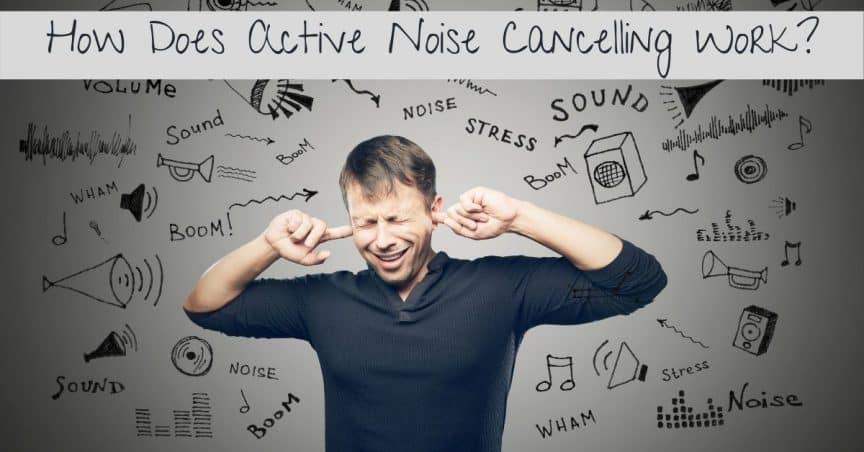- The Emotional Journey of Accepting Hearing Loss - October 25, 2024
- Making a Style Statement with Hearing Aids This Fall - October 15, 2024
- Fireplace Safety and Hearing aids - October 4, 2024
Have you been struggling with all the background noise in your city? You may be turning up the volume on your headphones or earbuds a little more each day to drown out the noises on your commute to work or during your daily activities. Using music to block out background sounds is actually dangerous to your hearing health and cranking up the volume can lead to hearing loss. Active noise cancelling headphones could be the solution, giving you some peace and quiet without damaging your hearing.
Noise is Everywhere
You may not realize it, but dangerously loud sounds are everywhere. Heavy traffic alone is around 85 decibels (dB). This is loud enough to cause permanent hearing damage if you’re exposed to these loud sounds for several hours a day. The subway train, rushing through the tunnels and screeching to a halt at the platform, often reaches 100 dB, causing damage in just a few minutes. And a construction site where heavy machinery is operated can top 110 dB, causing permanent hearing loss to those not wearing hearing protection.
Noise is Irritating
Children and adults alike use music to drown out all this uncomfortable noise. Have you ever put in your earbuds and turned the volume all the way up? You’re using music to block out the loud noises around you. But sending all that loud music right to your ears can cause even more damage to your hearing.
Noise is Dangerous
When you’re surrounded by all this noise, your hearing isn’t the only thing that’s affected. A recent study found that noise can have a big impact on your overall health. Being exposed to loud noise everyday increases your risk of cardiovascular disease and hypertension. Daily noise exposure can also lead to disrupted sleep, poor mood, irritation, higher levels of stress, and even difficulty concentrating.
For example, if you’re trying to work in a noisy office, part of your effort goes towards blocking out all that background noise. You have less energy to focus on your work, and you’ll feel exhausted by the end of the day. Even your home may not be as quiet as you think. The fridge is humming, the air conditioner clicks off and on, the washing machine is running, and the TV is on in the background. You can even hear cars going by on the street outside. All these sounds add up to a lot of stress and irritation, and you may crave a quiet moment so you can hear your own thoughts.
Noise Cancelling Headphones
If you want to block out this background noise without damaging your hearing, noise cancelling headphones can help you hear your music without turning up the volume. You can also use active noise cancelling to block out background sounds and enjoy the quiet without any music. This gives your brain a rest from blocking out background noise, and can even protect your hearing from dangerously loud sounds.
How Does Active Noise Cancelling Work?
Active noise cancelling is a simple yet effective technology that will block out all those background sounds. You’ll be able to work in silence or enjoy your music without cranking up the volume. How does this work? Microphones pick up all the sounds around you, and analyze the sound waves. The headphones neutralize these sound waves before they reach your ears by playing a sound wave that’s inverted by 180 degrees. These two sound waves cancel each other out, and you won’t hear the background noise, or the sound generated by the active noise cancelling technology.
Active noise cancelling works best against low-frequency sounds rather than high frequency sounds. They will reduce the volume of background sounds by approximately 30 dB. This means loud background sounds will become a faint muffled sound you can barely hear.
If you’re in a place with extremely loud noise, you should wear hearing protection to prevent hearing loss.
Seeking Treatment for Hearing LOss
Ready to look after your hearing health? To keep your hearing safe, we recommend listening with the volume at 60% or lower. It’s also a good idea to take breaks every hour to rest your ears. Visit us today and find out more about safe listening practices and active noise cancelling.

